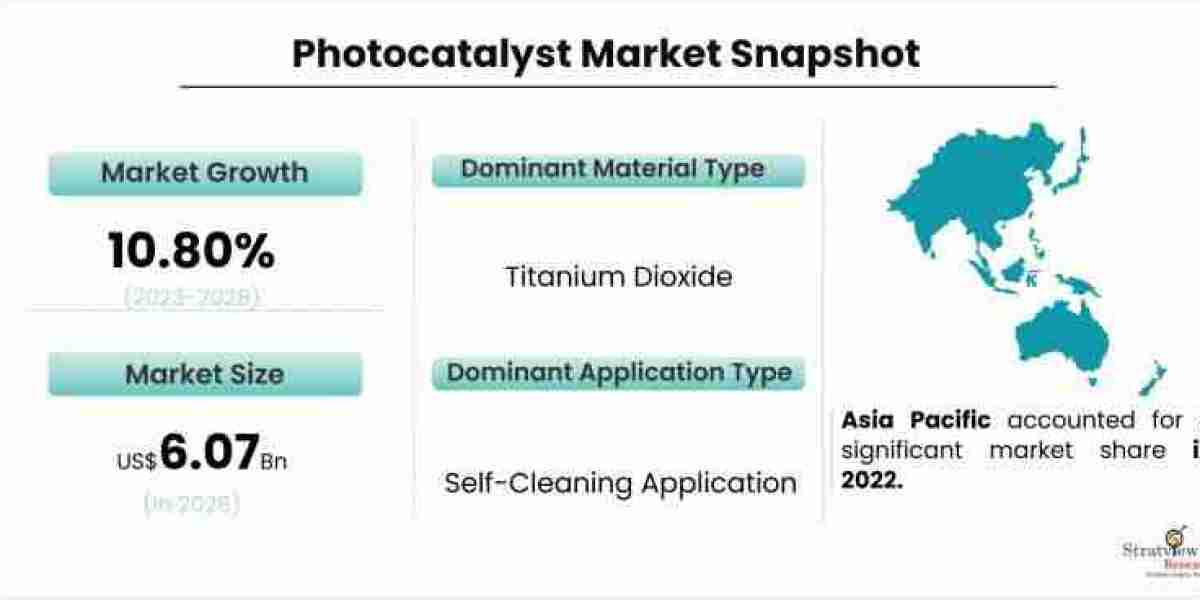Photocatalysis, a process that utilizes light energy to initiate chemical reactions, has emerged as a powerful technology with diverse applications across various industries. At the heart of this revolutionary technology are photocatalysts, materials that can accelerate reactions when exposed to light. In this blog post, we will explore the wide-ranging applications of photocatalysts and delve into the future trends that hold immense potential. According to a report by Stratview Research, the photocatalyst market is estimated to grow from USD 3.27 billion in 2022 to USD 6.07 billion by 2028 at a healthy CAGR of 10.80% during the forecast period.
Environmental Remediation: One of the most significant applications of photocatalysts lies in environmental remediation. These materials can effectively degrade organic pollutants, neutralize harmful gases, and purify water by eliminating contaminants. Photocatalytic coatings on surfaces can break down pollutants in the air, making them valuable in improving air quality. Additionally, they can play a crucial role in wastewater treatment, eliminating harmful substances and improving the overall water quality.
Energy Production: Photocatalysts are instrumental in the production of clean and sustainable energy. They facilitate processes like water splitting and carbon dioxide reduction, which are crucial for generating hydrogen fuel and converting carbon dioxide into useful chemicals or fuels. Photocatalytic materials offer a promising pathway to harness solar energy efficiently and produce renewable fuels, thus contributing to a greener and more sustainable energy landscape.
Self-Cleaning Surfaces: Photocatalytic coatings are being increasingly used to create self-cleaning surfaces in various applications. These coatings have the ability to break down organic contaminants, such as dirt, stains, and even harmful microorganisms when exposed to light. Self-cleaning windows, building facades, and textiles are just a few examples of how photocatalysts are revolutionizing cleanliness and hygiene in our daily lives.
Air Purification: With the growing concerns about air pollution and its detrimental effects on human health, photocatalysts are gaining traction as a powerful tool for air purification. By leveraging the photocatalytic properties of certain materials, harmful pollutants, such as nitrogen oxides and volatile organic compounds, can be efficiently decomposed into harmless substances when exposed to light. This application holds immense potential for improving indoor and outdoor air quality.
Medical and Healthcare Applications: The potential of photocatalysts in the medical and healthcare sectors is garnering significant attention. Photocatalytic materials can be used for disinfection purposes in hospitals, clinics, and other healthcare settings. They have the ability to inactivate bacteria, viruses, and other pathogens, providing an additional layer of protection against infections. Furthermore, photocatalysts are being explored for drug delivery systems and diagnostic applications, showing great promise for future advancements in healthcare.
Future Trends: As the field of photocatalysis continues to evolve, several exciting trends are emerging. Researchers are exploring the use of novel materials, such as metal-organic frameworks (MOFs) and perovskites, to enhance photocatalytic performance. Additionally, the development of tandem systems combining multiple photocatalysts aims to achieve more complex reactions and higher efficiency. Furthermore, advancements in nanotechnology and surface engineering techniques are paving the way for the fabrication of highly efficient and stable photocatalytic materials.
In conclusion, photocatalysts offer a wide array of applications that have the potential to transform various industries. From environmental remediation and energy production to air purification and healthcare, the power of photocatalysis is reshaping the way we address global challenges. As research and development continue to push the boundaries of this technology, we can anticipate further advancements and the emergence of new applications. Harnessing the power of photocatalysts holds immense promise for a sustainable future, where clean energy, clean air, and clean water are readily accessible to all.









